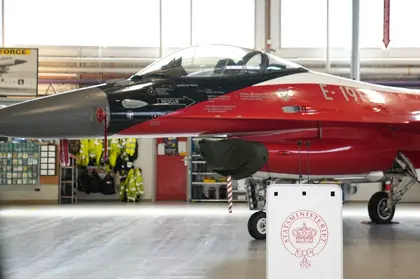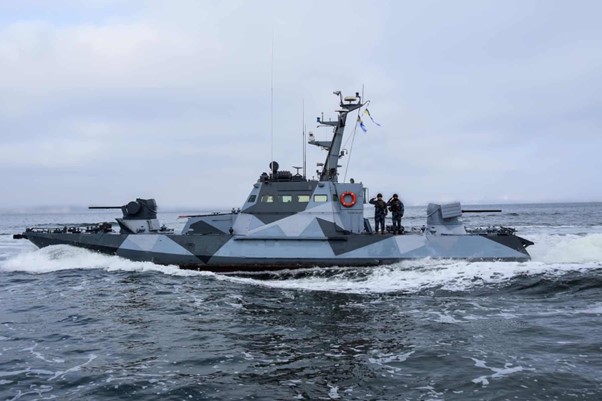F-16s mean increased air defense
The provision of 61 F-16 fighter jets over the next two years by the Netherlands and Denmark gives Ukraine greater air power to defend its populated areas, troop concentrations and military assets from Russian aerial attacks.
JOIN US ON TELEGRAM
Follow our coverage of the war on the @Kyivpost_official.
This is true in terms of both quantity and quality. The Ukrainian Air Force possessed approximately 130 fighter and attack aircraft when Russia started its full-scale invasion – not all of which were combat-capable. It is estimated to have lost around 40 percent of those planes, but some were replaced by the provision of Soviet-era MiGs from allies such as Poland and Slovakia.
- Find the latest Ukraine news published as of today.
- View the most up-to-date Ukraine news articles published today.
Sixty more fighters – and possibly more from other allies now that the precedent is set – puts more Ukrainian planes in the sky for a wider array of missions (compared to the approximately 10 airstrikes per day currently being flown).
A key focus is likely to be protecting Ukraine’s skies and cities from: a) incoming Russian long-range missiles – some of which are designed to fly below radar and not within the reach of surface-to-air defense systems; b) from the launch platforms for such long-range missiles including “Tu” class Russian bombers, and; c) from the approximately 50 airstrikes being flown against Ukrainian settlements and troop positions by Russian MiGs and related fighters.
The F-16 Mid-Life Update (MLU) that Ukraine will get has been operated by several European air forces for the past 25 years. Among its upgrades is a data link that will enable Ukraine’s aircraft to combine with NATO’s other assets including airborne sensor aircraft (e.g., AWACS), other fighter aircraft and ground-based air-defense radars, such as the Patriot.

Rutte Tells Rubio Trump’s Demand for Increased European Defense Spending ‘Fair’
This will improve effectiveness against Russian cruise missiles and generally help defend Ukraine’s airspace better than its diminishing fleet of Soviet-era MiG-29s, Su-27s and Su-24s. Unlike those planes, the F-16 can carry the full suite of air-to-air and air-to-ground missiles used by the US and its allies.
F-16s mean more offense
The F-16s massively improve the capacity of Ukraine’s newly trained mechanized infantry brigades to go forward in larger-scale combined arms movements, as opposed to their current tactic of smaller units undertaking probing assaults.
It’s why Ukraine has advocated so hard for a “Coalition of Jets” among its allies and why Commander-in-Chief General Valery Zaluzhny is known to have constantly asked for them.
He knows better than anyone else that an average of only some 10 combat sorties per day by the Ukrainian Air Force has clearly been a factor in the pace and tactics of Ukraine’s summer offensive against a well-entrenched and highly fortified enemy.
Indeed, the Armed Forces of Ukraine (AFU) have advanced as far and as quickly as their current, almost exclusively ground-based military equipment has allowed. Analysts have called “unprecedented” Ukraine’s mechanized infantry assault – without air cover - against Russia’s so-called “Surovikin Line” (defensive positions set up under Russian General Sergey Surovikin late last year to defend their land bridge/supply route to occupied Crimea).
The new planes substantially change the power equation.
F-16s are a strategic shift by the West
Some analysts have long-criticized Western military aid to Ukraine as “enough to defend itself, but not enough to win.”
The Dutch and Danish decision to provide the F-16s, which needed to be approved by the US as its producer and was strongly lobbied for by the hawkish UK, isn’t only about planes. It’s about purpose.
Strategic debates about “not escalating” against Russian President Vladimir Putin and operational arguments about the practicalities of training Ukrainian personnel and the state of Ukraine’s aviation infrastructure (e.g., inadequate and short runways) have been overcome.
The F-16s potentially show a shift by the West from playing “not to lose” to playing for victory – and all that represents in the scale and depth of military aid to Ukraine.
F-16s build Ukraine’s momentum
Having 60 F-16s has immense significance in terms of Ukraine’s military momentum, which is a key characteristic of success.
It has a multiplier effect beyond its operational impact in terms of Ukrainian forces’ focus and purpose – from the foot soldier to the Commander-in-Chief – not to mention the civilian population suffering under nightly terroristic missile assaults.
Importantly, it ends a long period of frustration, distraction. and lack of clarity about whether the West would or wouldn’t provide Ukraine with more of the air power it has been requesting for nearly 18 months.
And now for the caveats
Officials of all three countries involved have said the earliest Ukraine can expect to have the first of the 61 fighters is “by the New Year.” That’s likely to be a group of six Danish planes – or half a squadron – which will obviously arrive in winter and after the current fighting season. The arrival of the rest of the planes is staggered over some two years beyond that.
Some 70 Ukrainian personnel have reportedly started their training on F-16s and related Western aircraft, particularly in Denmark. Training is likely to take at least four to six months and much longer for the mechanics necessary to make the planes’ maintenance sustainable and self-reliant.
Approximately 800 more personnel will need to be trained just to operate the currently known allocation of about 60 craft. Equally, Ukraine has sadly lost some of its best pilots since the beginning of the full-scale period so many of the trainees will have less experience.
While some of the arguments put up by opponents of Ukraine being given F-16s were exaggerated, the reality is that Ukraine’s aviation infrastructure is: a) being battered by the war; b) was under-resourced prior to the full-scale invasion; and; c) designed for Soviet-era operations rather than F-16s.
Additionally, Ukraine’s capacity to maintain or repair the F-16s is basically non-existent. All these aspects will need urgent upgrades to get the most possible from the new planes. In the case of maintenance, for now, it’s likely to take place in allied countries such as Romania and Poland, but that’s a logistical challenge.
Having said that, a bit of luck helps. Namely, one of the advantages of F-16s from Denmark and the Netherlands, as well as Norway, is that, unlike US F-16s, they are equipped with drag parachutes to make them able to land on short, prepared dual-use highway/runway airstrips. This overcomes some infrastructure challenges and will also be helpful in dispersing the aircraft to avoid being targeted by Russian missiles and drones.
The F-16s are not “new” planes by any stretch. While in a straight comparison, an F-16 is a technically superior plane to a Soviet-era MiG, the planes the Ukrainians will receive do not represent the latest technology. Most were being phased out by the Dutch and the Danes and likely do not feature the latest in terms of either radar systems, pilot controls or even engines.
Nevertheless, they’re not rust buckets. For example, Denmark’s 30 operational F-16s may be older airframes, but they have received significant modernization with the mid-life upgrade which redesignated them F-16 MLU. The modifications essentially made them F-16C/D (C is a single seat version; D is a two-seater) equivalent to current operational US Air Force F-16 “Vipers.”
You can also highlight the text and press Ctrl + Enter










